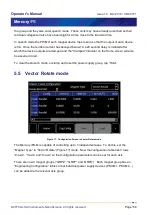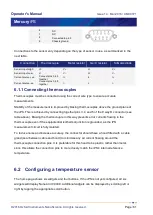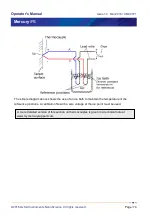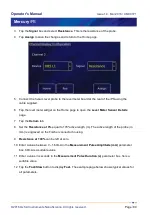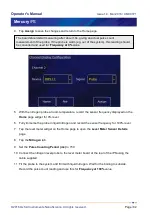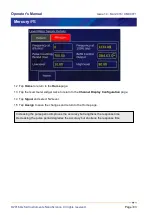
Operator's Manual
Issue 14
/
Mar 2016 / UMC0071
Mercury
iPS
©2016 Oxford Instruments NanoScience. All rights reserved.
Page
70
6.5.7 Available generic calibration files
The
Mercury
iPS includes calibration curves for the following sensor types.
Code
Sensor
Temperature range
Lin
1
Linear range
0-1677.7
Null
Centre zero
-838.9 to +838.9
Con 1
Conductance
0 to 20
TG 5
AuFe 0.03/Chr
2 to 500K
TG_57
AuFe 0.07/Chr
2 to 500K
CN 3
Cernox resistor
1.5 to 300K
TT 5
Copper/Const
20 to 500K
TT 4
Copper/Const
-250 to 400°C
TK10_13
Chromel/Alumel
-200 to 1370°C
CR 11
Ruthenium oxide
0.25 to 10K
RF 52
2
RhFe resistor
1.5 to 500K
RP 1
Platinum resistor
-200 to +100°C
RP 5
3
Platinum resistor
20 to 500K
RP 51
4
Platinum resistor
50 to 500K
RL 3
CLTS
2 to 300K
DS 32
Silicon diode (OI)
2 to 300K
DS 31
Silicon diode (LS)
2 to 300K
CA 21
100R Allen Bradley
4 to 250K
CA 22
270R Allen Bradley
4 to 250K
CS 01
470R Speer
0.25 to 9.999K
Your
Mercury
iPS may not have all the above calibration files pre-loaded.
1
The Lin and Null ranges are general purpose ranges that may be configured for any required span and zero. Both ranges provide
a linear relationship between input and display. The Lin range is unipolar while the Null range is bipolar.
2
The iTC includes two curves for 27 ohm Rhodium-Iron sensors. Curve A is used for sensors having a resistance of 2 ohms or
greater at 4.2K. Curve B is used for sensors having a resistance of less than 2 ohms at 4.2K. Using the appropriate curve should
produce linearization errors of less than 1% over the full temperature range. For a more accurate fit to a specific sensor, order a
custom calibration.
3
This is for a pure Platinum element.
4
This is for a platinum element that is ballasted to BS1904/DIN43760. This element is more readily available than a pure platinum
element but its performance is unspecified below 73K. The data for 50-70K is based on BS1904:964 rather than BS1904:1984.



